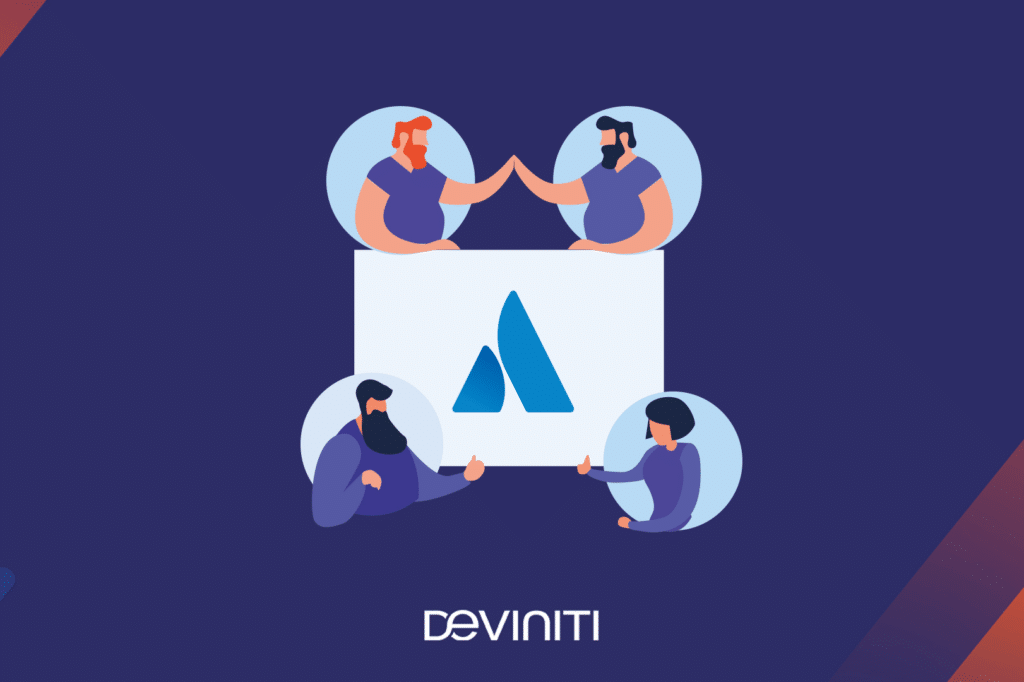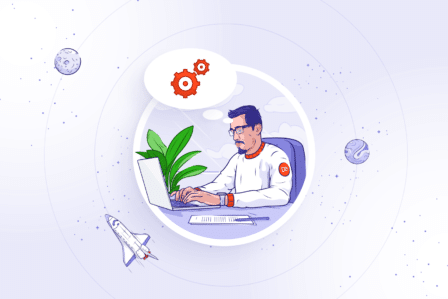AI solution for 5 biggest ITSM challenges

Updated on August 3, 2022
With new year come new challenges. 2019 was the year when IT businesses aimed to deliver better service and provide better customer support. To do so, we need to face a number of challenges or overcome some of our fears and predictions. That’s why we went through all possible challenges ITSM can face this year and selected five that we think will be the biggest ones.
Staff management
For many years, people have been probably the most important issue of IT businesses. It’s not because there are not enough well-qualified specialists out there waiting for us to call and employ them. The main concern here is that each year the cost of hiring and retaining a highly-capable employees increases.
Nowadays, it’s hard to bring young blood to the company without offering them at least the national average wage. Besides, they need to believe that we can give them a chance to prosper because more and more young people want to make difference and become future thought leaders like Steve Jobs or many others did. Moreover, we need to remember about the changes happening right now in IT.
AI, self-service, and automation become more common in the industry. This means that some roles of people employed in IT, as well as required qualifications, will change, for example according to SysAid in 2020 the most-wanted qualities will be knowledge of AI and analytics, emphasis on innovation, focus on continuous learning, and such.
Another problem with employee management is that it can be hard to meet employees’ expectations in terms of support. We don’t mean the support with requests they raise on internal service desks, but about supporting them in general.
It’s important to remember that our employees are people just like us – they have their ups and downs, face problems and challenges, aren’t immune to stress and work overload, etc. That’s why their well-being needs to become our priority as well, especially now, when they will need to do mostly the hard work, because automation, artifical intelligence, and self-service will handle the easier tasks.
We can take a closer look at the working culture, see if everything is as it should be there, tackle work issues that worry our employees, provide them corporate service on the higher level to improve employees’ welfare.
Employees won’t stay in a place where they can’t prosper both professionally and personally. It’s not that hard to find another job now, when globalization takes over the world. And even though it may seem to be hard to find a qualified employee, companies have much higher chances to connect with the right person and sweep them out of the market for themselves.
Artificial intelligence in ITSM
2019 is the year when artificial intelligence moves beyond the hype and becomes a necessary addition to our work. Even though the media painted a negative picture of AI and showed it as a serious job killer especially in IT, only 16% of people working in the industry sees it as such. Remaining 84% sees the appeal of implementing this technology in their daily tasks.
The reason is simple – we can automate the majority of repetitive tasks, however, we still have to do most of the work ourselves. AI comes in handy here because it learns the schemes and processes, and if we provide it with a profound knowledge base, the whole automation process won’t be that much of a problem. Of course, we still will be responsible for configuration, analyzing if it works properly, and adjusting the settings, but it’s much less work than if we were to do all that job by ourselves.
AI’s main task is to automate those activities that aren’t a priority for agents and assist with those tasks that come up out of nowhere. A good example of the latter is chatbots. We can customize chatbot in such a way, that when an agent is taking care of something more important, for example a highest-priority request, the bot will inform an agent about the customer waiting for support but also it will try to help out the customer as much as it can. That’s why providing AI with profound knowledge base is so important.
This way, we’re sure that there’s a chance for our users to find the answer to their question already during the short exchange with the chatbot. When it comes to the former, so non-priority tasks, we can use automated categorization, prioritization, grouping tickets, assigning tickets, and much more to take those routine activities off agents and leave them the most valuable work to do – providing the customers with needed help on more complex requests.
However, AI will not only aid us with the small routine tasks. It’s there for us when we have to analyze big sets of data, handle intelligence-based reporting or data mining, which will result in making better-informed decisions. Moreover, the implementation of this technology in our work means that we surely experience improvement in the quality and rate of our actions. But, to truly benefit from an application of AI, we need to provide it with solid knowledge management foundations, because without proper education, the technology won’t be of any use to us and can only worsen our situation.
Cyber security
The alarming frequency of high-profile security breaches in last year resulted in corporations becoming more obsessed with data protection than ever. It’s not surprising that according to the survey carried out by INAP, in 2019, cyber security is a priority for over 36% of companies.
Why are the companies so exposed to cyber attacks? In over 52% of cases, development teams work on so many critical patches and updates that it takes too much of their time, which puts the company at risk of data breach. Also, the complex dependencies and integrations can create weak spots in the interfaces. We can ensure the company’s security with such management tools which enable high-level view into the state of all our systems. Otherwise, providing security in-house will become even more challenging and dangerous.
We need to remember that not only proper management tools will provide security for the company. Even simple mistake in system configuration can expose our systems to the hackers. That’s what happened in the case of NASA and their Jira instance. The only mistake of NASA admins’ was that they overlooked an unproper permission configuration which gave the hacker access to the sensitive internal data with all internal user, employee, and project details. From this seemingly little mistake, the hacker gained insight into quite a lot of information – not only the data they had direct access to, but also the username formatting scheme or other information stored in the application.
In short, we need to remember about the human factor in providing security, because it may expose us to cyber attacks even with the best management and security tools in place.
Migrating to the cloud
2019 will be the year of cloud migration especially among small and medium businesses. The key factor here is the cost of the cloud instances. It’s a well-known fact that costs of setting up and maintaining self-hosted systems are higher, because we need to pay for both the equipment and the administrators who will take care of it. Even though cloud can be easily adopted by any small and medium company, the big corporations have to spend months or even years to successfully and safely move their infrastructure from servers to cloud, for example AWS migration took Atlassian whole two years.
So there are numerous ways this investement can go south. Firstly, we need to remember that even a private cloud isn’t as secure as on-premises solution, as well as it doesn’t do well with too much data to process. The problem with cloud security is that we can easily over- or undersecure our cloud instances, simply because we didn’t think this through when migrating. Moreover, we don’t have access to the cloud network, as well as underlying infrastructure, which can be an issue for some of the companies. That’s why cloud migration should be well planned before going with it.
Other than that, it’s easy to move from one technology to another and forget to change operational process with it. It’s another crucial thing to keep in mind – cloud doesn’t stick to the same rules as on-premises solutions, even though some of them are quite the same. We need to move from DevOps to CloudOps methodology, where zero downtime is the key priority. We need to duplicate critical components of the system which we can then use as a backup in case of system failure or to improve system performance. It’s also necessary to change both management and monitoring tools. Another important thing is to consider how we want to store our data on the cloud, because files, objects, and databases act differently on cloud and bad storage choice can create dependencies which won’t be that easy and cheap to undo.
Customer Experience Management
Thanks to the development of technology, the customers can choose from various communication channels to get in touch with businesses. The majority of business-to-consumer companies provide high-quality customer experience by enabling their clients to easily contact them in case of any problems with the product. The customers can message them on social media or live chat on the company’s website, they can find solutions for their problems themselves by browsing through frequently asked questions, forums, or even videos on YouTube. The whole process is seamless, quick, and effective, because of the quality of customer engagement procedures.
The same customer-centric approach becomes the priority for IT companies, because our clients want just the same fine treatment they receive in the B2C model. The basis of this approach is providing unified experience on all possible touch points, from social media to company website to service desk. We can use whatever we want to guarantee users the best customer support on earth – from user experience, visual and interaction design to artificial intelligence, like chatbots, to self-service. Design such interfaces and support mechanisms that will be intuitive and clear for the customers, implement live chats on company or support website to enable faster contact with the support team, integrate service desk with the knowledge base to provide customers with possible solutions to their issues before reporting them to support.
However, we all need to remember that human factor is always important. Atlassian’s Work Futurist Dom Price concludes that even though chatbots are efficient, the customers don’t like them that much. In case of customers who use Jira for their daily work, there are so many versions of the software, apps that extend its functionalities, setup and configuration options that each support case becomes unique. That’s why technology, no matter how advanced and knowledgeable, won’t be able to solve most such cases by itself. We thought about going with the flow and implementing a chatbot on our support page, but we chose LiveChat and that works great for us, because customers mostly use it when they want to know more about our apps or they can’t find some information in the product documentation.
Overall, even with advanced technology, everything goes back to people – customers, employees, agents, and administators. Without them taken into consideration, none of the above challenges is possible to overcome.
See what else Atlassian can offer you
Benefit from our experience and find out how to exploit the potential of Atlassian’s tools for your business!




